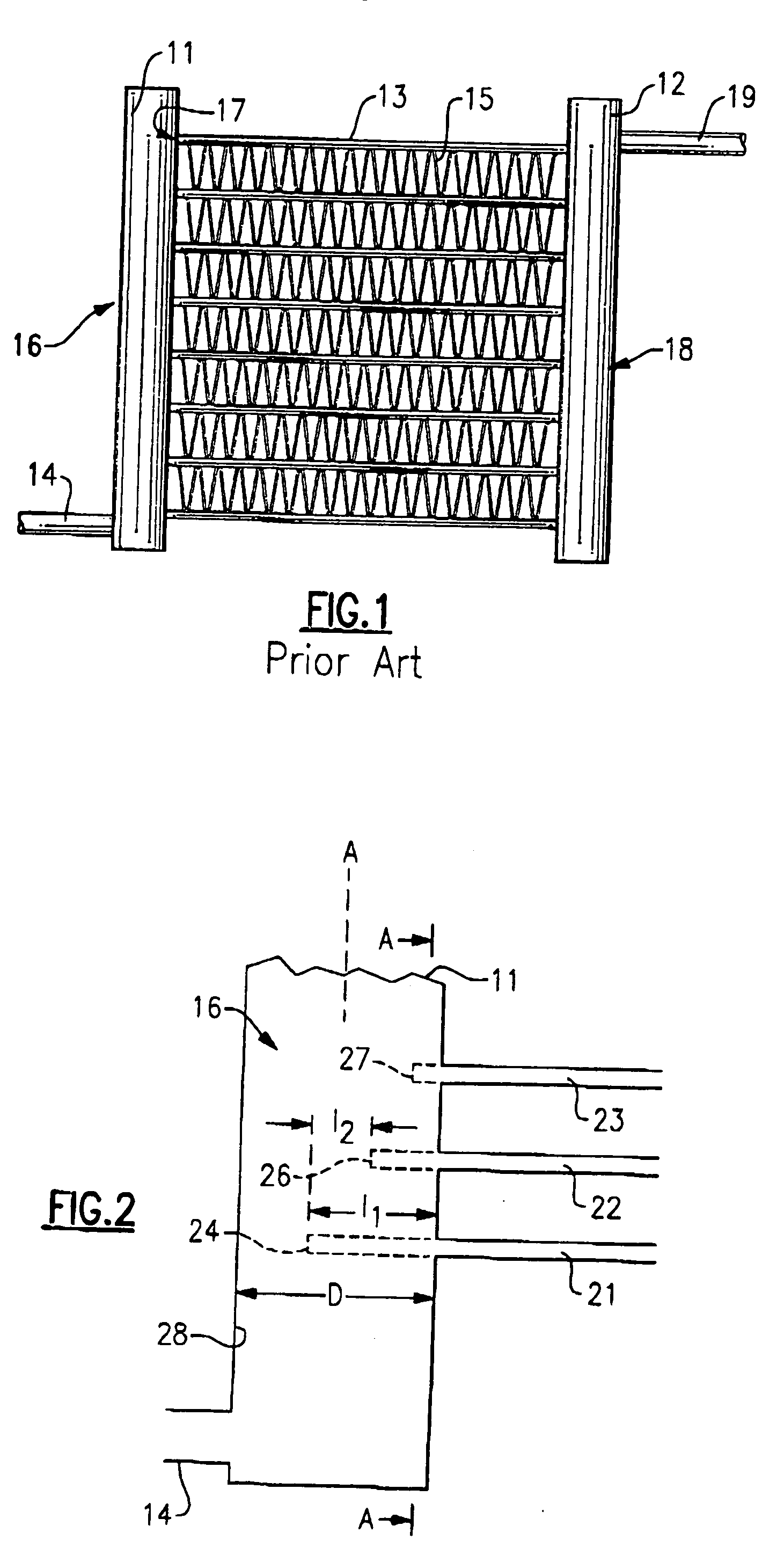Parallel flow evaporator with variable channel insertion depth
a technology of evaporator and channel, applied in the direction of indirect heat exchanger, refrigeration components, lighting and heating apparatus, etc., can solve the problems of heat exchanger orientation, significant evaporator and overall system performance degradation, and possible misdistribution of refrigeran
- Summary
- Abstract
- Description
- Claims
- Application Information
AI Technical Summary
Benefits of technology
Problems solved by technology
Method used
Image
Examples
Embodiment Construction
[0017] Referring now to FIG. 1, a parallel flow heat exchanger is shown to include an inlet header or manifold 11, an outlet header or manifold 12 and a plurality of parallel disposed channels 13 fluidly interconnecting the inlet manifold 11 to the outlet manifold 12. Generally, the inlet and outlet manifolds 11 and 12 are cylindrical in shape, and the channels 13 are usually tubes (or extrusions) of flattened or round shape. Channels 13 normally have a plurality of internal and external heat transfer enhancement elements, such as fins. For instance, external fins, disposed therebetween for the enhancement of the heat exchange process and structural rigidity, are typically furnace-brazed. Channels 13 may have internal heat transfer enhancements and structural elements as well.
[0018] The usual manner of attaching the parallel channels 13 to the inlet manifold 11 and the outlet manifold 12 is to insert the channels 13 so that they extend into the internal cavities of the inlet and ou...
PUM
 Login to View More
Login to View More Abstract
Description
Claims
Application Information
 Login to View More
Login to View More - R&D
- Intellectual Property
- Life Sciences
- Materials
- Tech Scout
- Unparalleled Data Quality
- Higher Quality Content
- 60% Fewer Hallucinations
Browse by: Latest US Patents, China's latest patents, Technical Efficacy Thesaurus, Application Domain, Technology Topic, Popular Technical Reports.
© 2025 PatSnap. All rights reserved.Legal|Privacy policy|Modern Slavery Act Transparency Statement|Sitemap|About US| Contact US: help@patsnap.com



